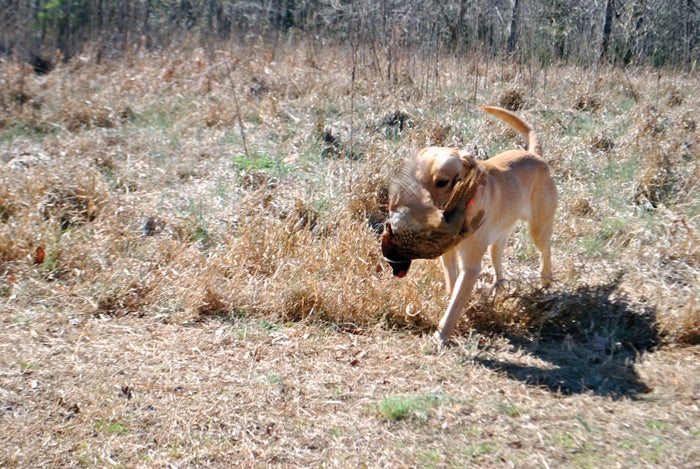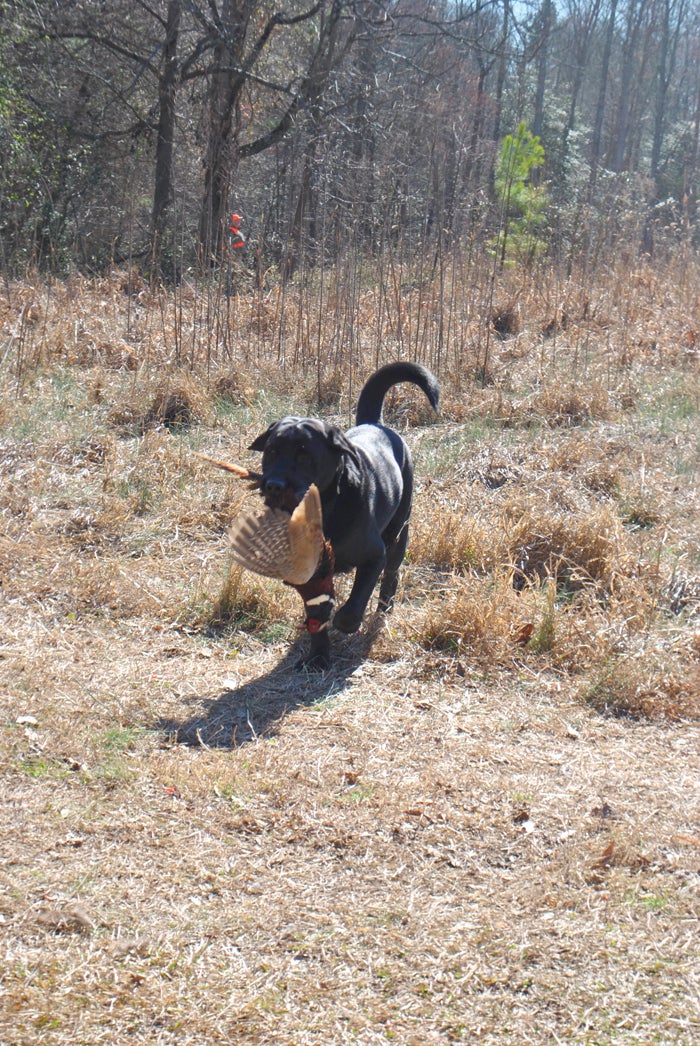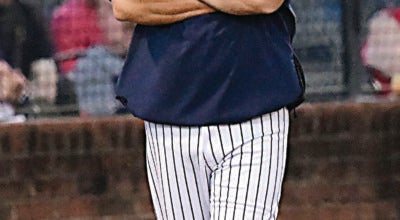Wanna step outside: Buckshot and Boone clean up at pheasant hunt
Published 12:00 am Sunday, February 26, 2023
I
f you grew up in the 1960s and 1970s like I did, and you were much of a fisherman, hunter and reader, you read the “Big Three” of sporting magazines: Sports Afield, Field and Stream and Outdoor Life.
My father had a subscription to one that I read and I got the others while waiting for my favorite barber’s chair to open up about once every six weeks on a Saturday afternoon. The wait was long enough that I could read two magazines, cover to cover, before climbing into the chair and having the barber mention something about my “double crown.”
Fifty years ago, those magazines were as much about adventure as they were providing outdoorsmen with tips on how to catch more bass and trout or kill more squirrels and deer. They were filled with stories about trips 99% of us would never make: Alaska for Dall sheep, Africa for lions and leopards and elephants, the Bahamas for bonefish and Manitoba for lake trout.
I remember at least one story about pheasant hunts in Great Britain, referred to as “driven” pheasant hunts. They were usually on big, country estates belonging to the uber-rich, and they consisted of a handful of “drivers” walking across grain fields, flushing pheasants and “pushing” them toward hunters waiting a few hundred yards away.
Those certainly weren’t the kind of pheasant hunts I heard about from hunters I encountered who were lucky enough to make trips to South Dakota, Iowa or Nebraska, where huge cornfields were crisscrossed by hunters and dogs, either traditional pointing dogs like setters and pointers, or flushing dogs like Labs and golden retrievers, even springer spaniels.
About 20 years ago, I was invited on my first “European” style pheasant hunt, at a hunting preserve near Henderson. Only they called it a “tower shoot.” A semicircle of hunters ringed one side of a hill on the property, and the preserve owner on the hilltop threw pheasants out of what looked like a tower stand for deer, roughly in our direction, and we tried to shoot them as they barreled over our heads, hoping to evade loads of No. 6 shot. As I recall, I took my young son, Andrew, with me, and he was absolutely stunned when I killed the first three birds that came my way. Suffice it to say, my wing-shooting went downhill from there.
With Andrew becoming the owner of Buckshot, the world’s greatest black Lab, and 5½ years later, the alpha male in Buckshot’s first litter of puppies, Boone — certainly not the world’s greatest yellow Lab — other opportunities presented themselves. Most of them involved wood ducks and a tiny pond in the woods in Yadkin County, or dove fields on several properties around our home base.
Another opportunity was last February, when members of a statewide conservation group showed up at Shady Knolls Gamebird Farm in Randolph County for a “European Pheasant Shoot.” Andrew got wind of this event; a dog trainer in the local chapter of the conservation group was looking for dog owners who wanted to get more bird work for their retrievers and help the folks paying for the opportunity to shoot to find all their birds. Last year, Andrew took Buckshot, who got almost 50 retrieves during 2-hour morning and afternoon shoot. After the hunt was over, dog handlers got to head for the corn stubble and woods and have their dogs find and flush some of the pheasants that had eluded all the lead-slingers earlier in the day. I think Andrew and another guy split 17 birds that Buckshot found or flushed that afternoon after the paying hunters had departed.
At Shady Knoll, stands are set up in a circle around a knoll from which fingers of pines and mixed hardwoods radiated, with planted pea patches in between. On the knoll was, again, what looked like a tower deer stand. From the tower, pheasants were pitched in every direction, with hunters moving from one shooting location to another every 5 or 10 minutes.
When time for the shoot rolled around this year — this past Saturday — I made sure I got to tag along. With Buckshot closing in on his ninth birthday, Andrew decided his old buddy probably couldn’t handle the all-day workload and brought Boone to take the morning hunt. About a half-dozen other retrievers and their handlers were scattered around the shooting grounds.
One immediate and overriding impression: I’m not nearly as bad a wingshot as I imagined. I saw more birds missed at more angles and ranges in the first 20 minutes than I ever could have imagined missing on my own. Sitting on a dove stool behind the shooters, with Andrew on another stool and Boone in between us, I kept looking at my son and whispering, “How did they both miss that bird six times?” and “Surely we’re better shots than this.” I remember watching one cock pheasant fly across a neighboring pea patch that held three or four shooters on two stands. It drew 13 shots and was still sailing along, untouched, when he cleared the treeline at the far end of the pea patch.
But enough birds were brought to the ground that Boone and Buckshot each got at least two-dozen retrieves each — Boone in the morning and Buckshot in the afternoon — and Andrew polished off four more pheasants in the hour after the hunt.
Another immediate and overriding impression: Buckshot and his boy Boone are both pretty good retrievers, but in different ways. Buckshot is great at marking birds; he was seeing them at about the same time the shooters were, and he followed their flight as closely as the guys carrying the Berettas and Benellis. Quite a few times, when a bird was “puffed” 20 or 30 yards in front of us, Buckshot was almost to the spot where the bird hit before it hit the ground. Very rarely did he have to use his radar-guided nose to find one. Boone, on the other hand, didn’t mark birds nearly as well, but he worked out their eventual location by using his nose, quartering back and forth until he found them.
Andrew and I agreed that we’ll return every year to handle the dogs, as long as Shady Knolls keeps holding the hunt.
No spring flounder season for NC anglers
A proposed six-week recreational season for Gulf and summer flounder isn’t going to happen, as the N.C. Division of Marine Fisheries announced. Despite only getting a month-long season and a one-fish daily creel limit in 2022, fishermen still caught too many summer flounder — at least according to their statistics.
NCDMF said recreational fishermen exceeded the summer flounder total allowable catch for 2022 (159,706 pounds) by 25,000 pounds. The recreational quota for 2023 will be adjusted for the overage, so a quota of around 135,000 pounds is expected — which would likely reduce the 30-day fall season to around three weeks. Season dates will be announced later this year.
NCDMF’s Southern Flounder Fishery Management Plan allowed a March 1-April 30 recreational season for flounder in the Atlantic Ocean if the expected harvest would not hurt efforts to rebuild the species. Apparently, it would.
Limited striper season set for Roanoke River
The N.C. Wildlife Resources Commission has set 2023 seasons for striped bass in the popular Roanoke River Management Area, and it’s a far cry from years past.
The commission has set April 14-17 and April 22-23 for the harvest of stripers in the Roanoke River and its tributaries — the Chowan, Middle and Eastmost — downstream from Roanoke Rapids Dam in Weldon to the Albemarle Sound.
The daily creel limit is one striped bass, with a minimum size of 18 inches, and a 22- to 27-inch slot in which no fish can be kept.
A 2020 stock assessment indicated that stripers in the Roanoke River and Albemarle Sound were overfish and that overfishing was occurring. The Commission set a harvest quota for 2023 of 12,804 pounds.
Anglers can catch and release striped bass in the rivers throughout the spring. The commission recommends anglers use a single, barbless hook or lures with a single barbless hook. That is a requirement when fishing from the U.S. 258 bridge near Scotland Neck to Weldon between April 1 and June 30.
Dan Kibler is an outdoors writer based in Clemmons.






